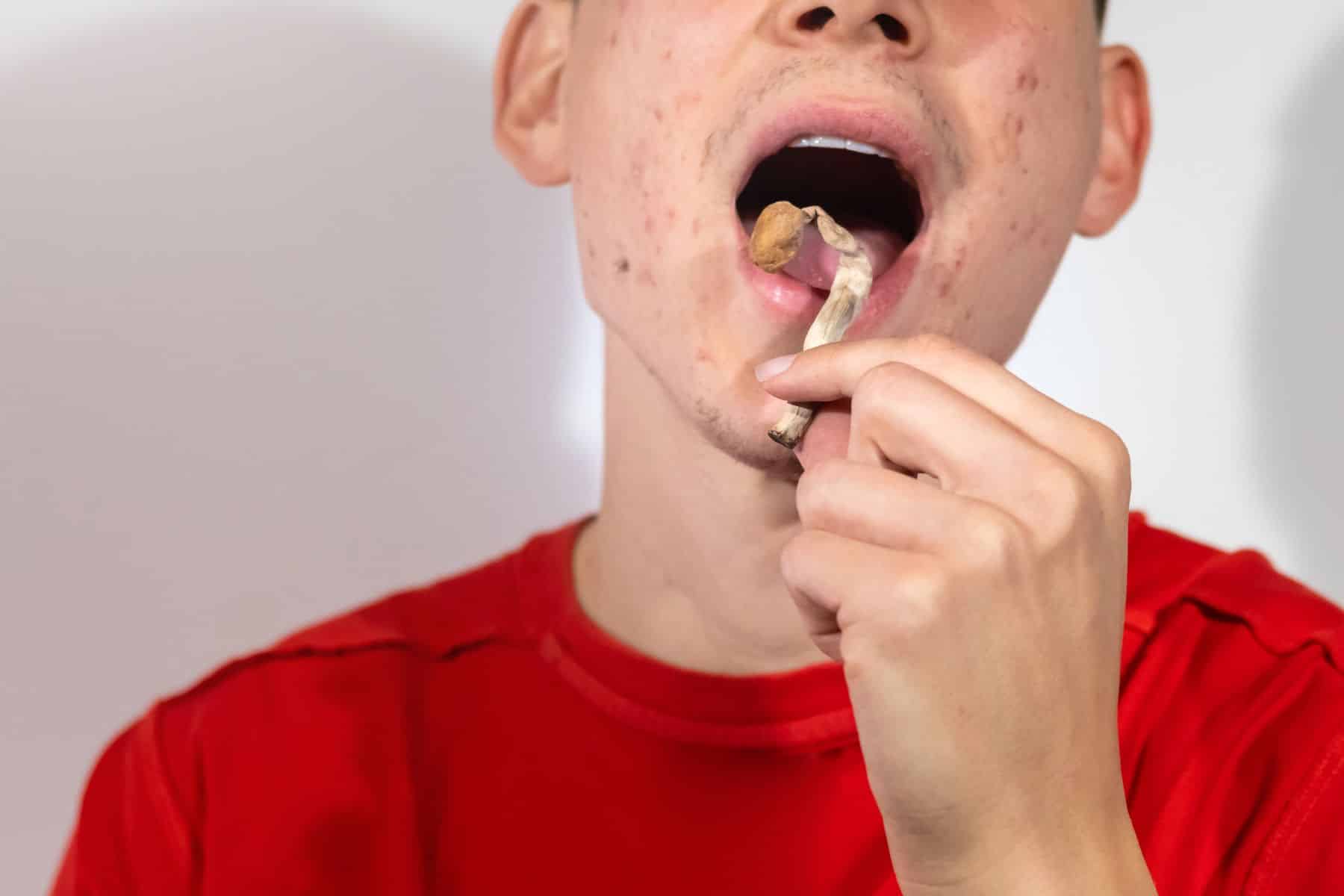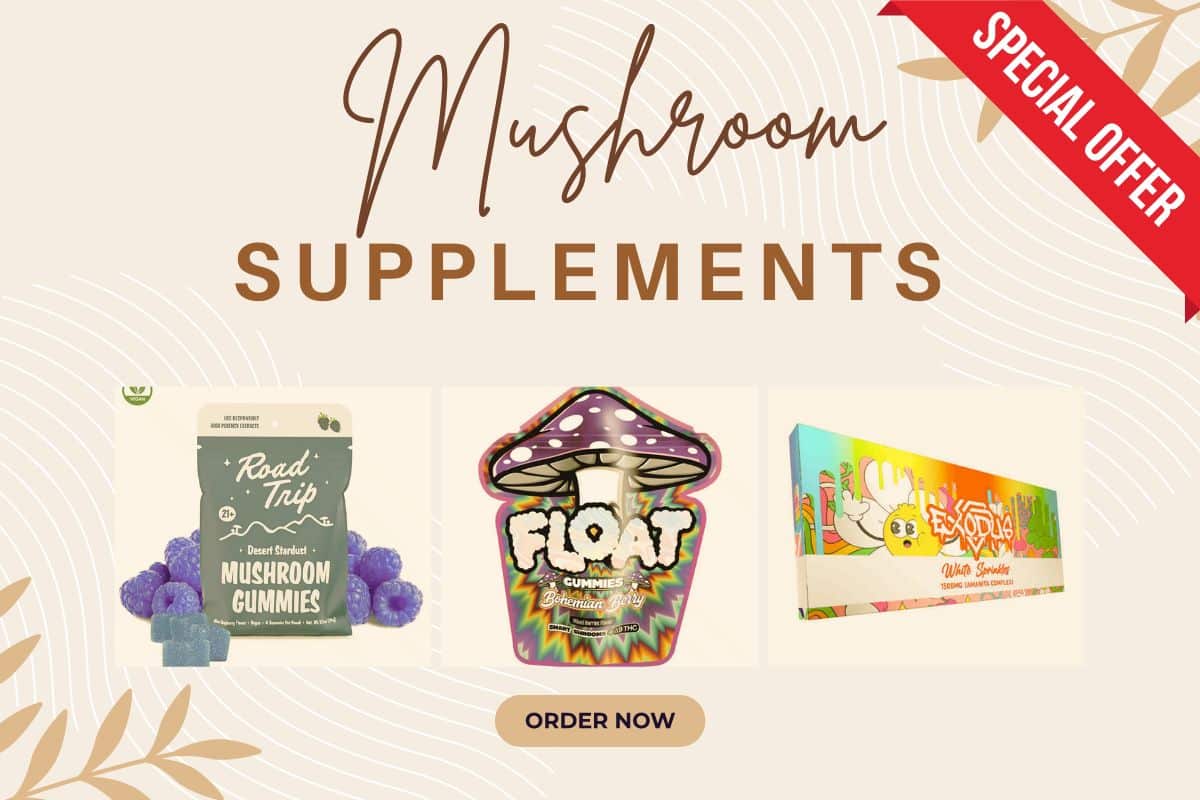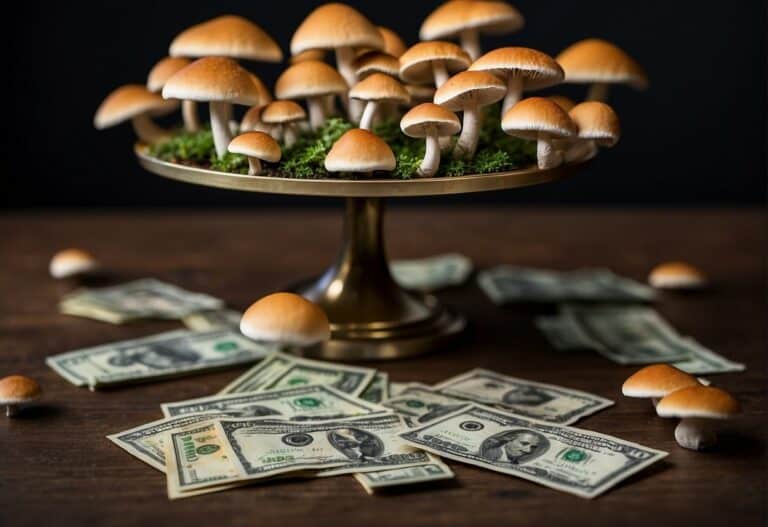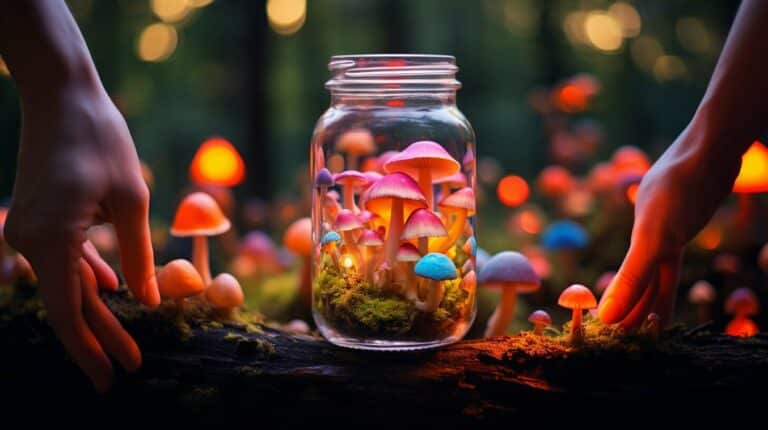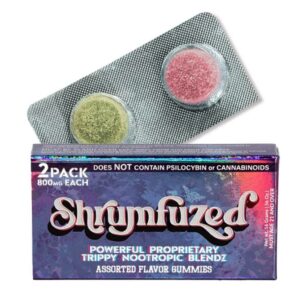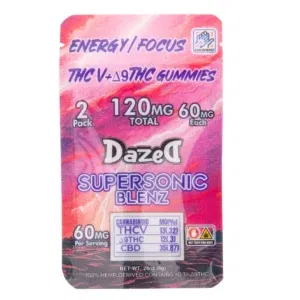Can You Redose Shrooms: Understanding Safe Psychedelic Practices
Embarking on a quest with magic mushrooms can be a wild ride, but striking the perfect dose spells the difference between an epic journey and a bumpy road. Tempted to up the ante? Pump the brakes. Deciding to increase your dose isn’t child’s play, especially for first-timers or thrill-seekers. You’ve got to consider a bunch, like the timing for your next dose, the extra amount, and how your body grooves with these splendid fungi.
Table of contents
An important aspect of using shrooms is the timing and effects. After ingesting the initial dose, there’s an expectation of a psychedelic journey that can last several hours. It’s common to wait at least one to two hours to fully experience the effects before even contemplating redosing. However, patience is key, as the effects can vary based on numerous variables such as stomach content, metabolism, and the potency of the shrooms themselves.
Beyond the initial experience, the question of whether to consume an additional dose of shrooms requires careful consideration of the potential for intensified effects and the risk of an unpredictable psychedelic experience. Each session with shrooms is unique, and hence, making an informed decision is critical for your safety and wellbeing. It’s recommended to approach this subject with caution and to be well-informed about the implications of redosing before making a decision.
Understanding Psilocybin Mushrooms
Before exploring the specifics of psilocybin mushrooms, it’s important for you to understand that these psychedelic mushrooms vary widely in their potency and effects, which are primarily influenced by their strain and the pharmacology of the active compounds within them, psilocybin and psilocin.
Different Strains and Potency
Psilocybin mushrooms, often referred to as shrooms, come in various strains, each with a distinct level of potency and psychedelic effects. The potency is a measure of the strength of the mushrooms and is heavily influenced by the concentration of psilocybin and its metabolite psilocin. For example:
- P. Cubensis: A commonly used strain with moderate potency.
- P. Azurescens: Known for being significantly more potent.
While dosing, it’s crucial for you to consider these differences as they can significantly impact the intensity and duration of your experience.
Pharmacology of Psilocybin and Psilocin
Once ingested, psilocybin, the prodrug, is metabolized into psilocin, the compound responsible for the psychedelic effects of mushrooms. Psilocin binds to serotonin receptors in the brain, especially the 5-HT2A receptor, which is thought to lead to the altered states of consciousness associated with a psychedelic experience. The pharmacology of these compounds explains why:
- Effects can last for several hours.
- There is variability in experiences between different doses and among individuals.
The elimination half-life of psilocybin ranges from one to two hours, and psilocin’s is roughly 50 minutes, which means that these substances are typically metabolized and excreted within several hours post-ingestion.
Pre-Trip Considerations
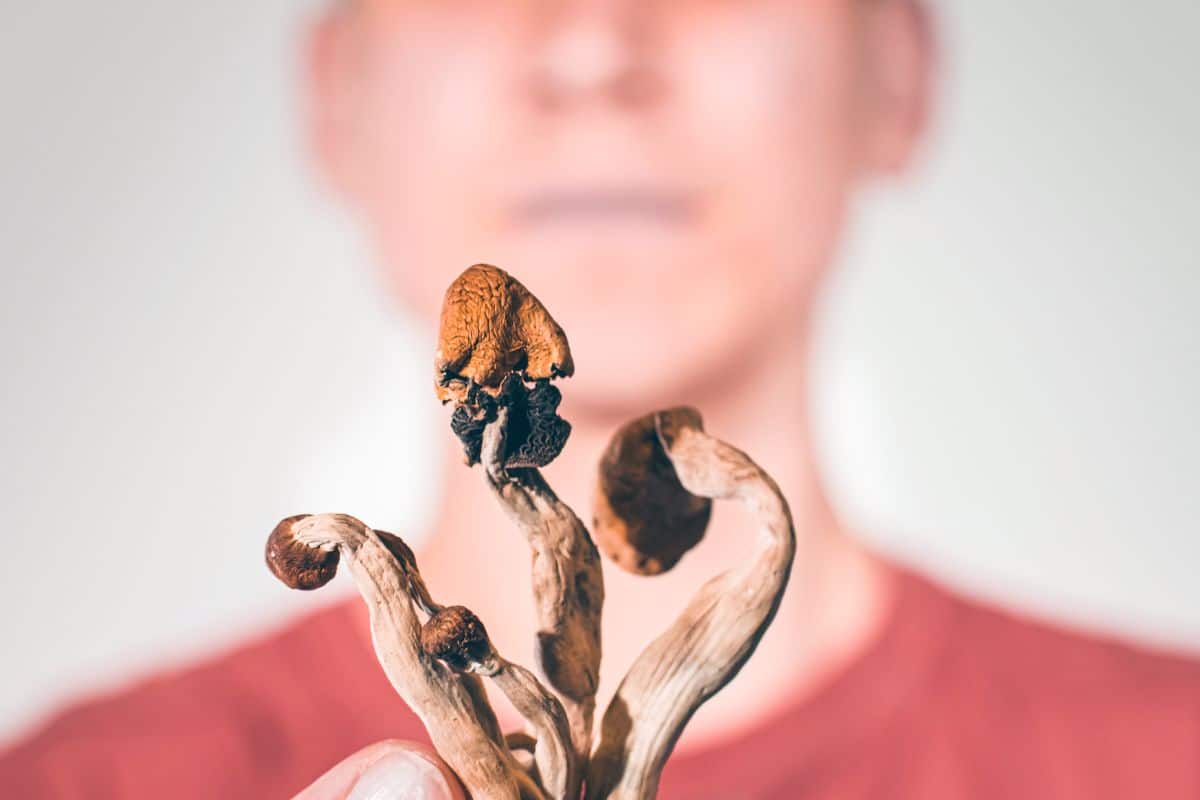
When planning to experience psilocybin mushrooms, or “shrooms,” it’s crucial to make informed decisions about both your environment and the substance itself to ensure a pleasant and meaningful journey.
Setting and Preparation
The setting is a fundamental aspect that can influence your psilocybin experience. Choose a safe, comfortable, and familiar place where you feel at ease and free from interruptions. This could be your home or a secluded natural environment. Preparation also involves having a trip sitter—a sober companion who stays with you to provide support and ensure safety during your experience. It’s important that this person is trustworthy and preferably experienced with psychedelic support.
Dosage and Dosing Guidelines
Understanding proper dosage is vital to having a controlled and enjoyable experience. A typical dose can range from 0.2 grams (a microdose) to 5 grams (a heroic dose) of dried mushrooms, depending on your body weight, tolerance, and the intensity of the trip you’re seeking, whether it’s for joy, personal insight, or spiritual exploration.
- Light Dose: 0.5 – 2 grams
- Moderate Dose: 2 – 3.5 grams
- Strong Dose: 3.5 – 5 grams
Begin with a conservative amount, especially if it’s your first time. It’s safer to start with a lighter dose and gradually increase in subsequent sessions rather than taking a large quantity at once. Remember, doses should be measured accurately with a scale, and consuming shrooms on an empty stomach may intensify the effects.
The Shroom Trip Experience
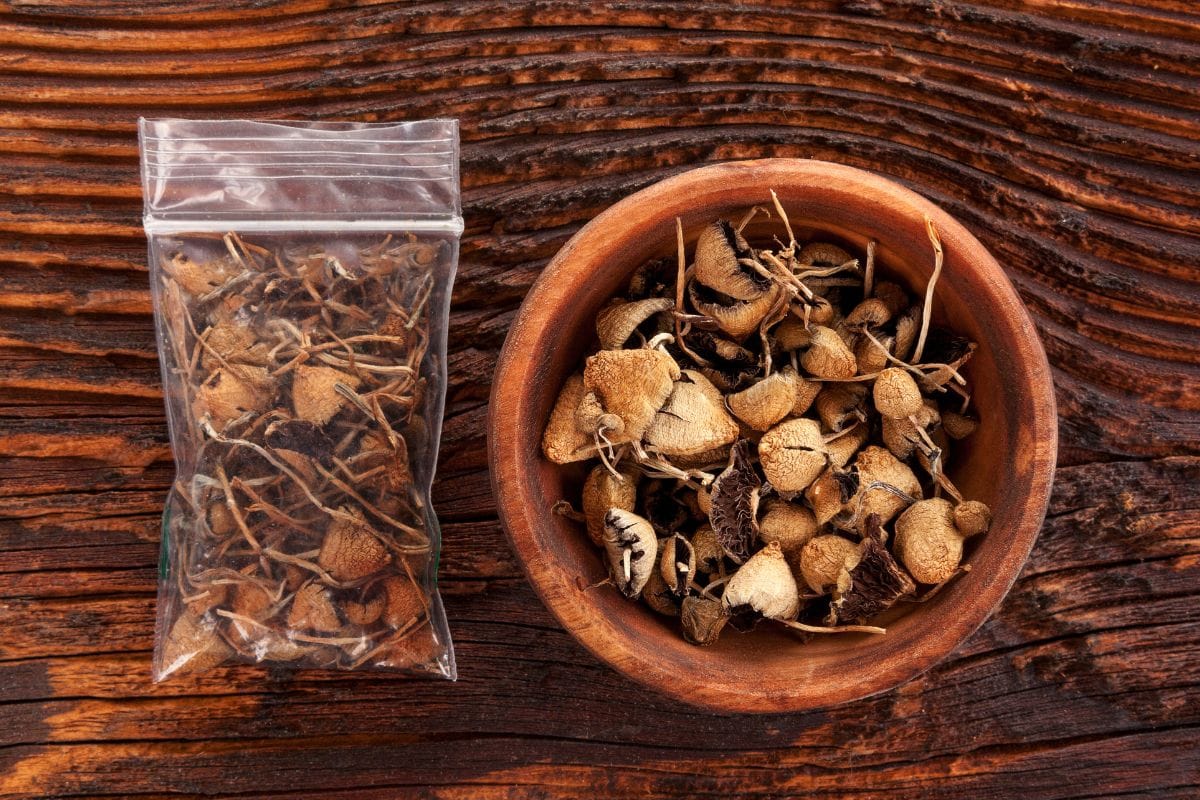
When you take psilocybin mushrooms—commonly known as “shrooms”—your experience will typically unfold in various stages, each accompanied by a range of effects and potential hallucinations that can dramatically alter your perception and emotional state.
Stages of a Shroom Trip
- Onset (20-40 minutes after ingestion): Your trip begins with the onset, where you’ll start to feel the initial effects of psilocybin.
- Come Up (30-90 minutes after onset): As the effects intensify, you may feel waves of energy or emotion.
- Peak (2-4 hours after ingestion): The peak is often where the effects are most intense. During this time, you might experience profound changes in thought, mood, and perception.
- Come Down (2-6 hours after peak): Gradually, the intensity diminishes, and you return to a more normal state of being.
Common Effects and Hallucinations
During your trip, you may encounter a variety of effects and hallucinations:
- Visual Changes: This can include enhanced colors, geometric patterns, and the perception that surfaces are undulating or breathing.
- Emotional Swings: Feelings of euphoria are common, but you can also experience introspection or transient anxiety.
- Sensory Enhancement: Sounds may seem amplified, and you might perceive synesthetic phenomena, like ‘seeing’ music or ‘feeling’ colors.
It’s important to have a safe and comfortable environment during your trip, as your surroundings can significantly influence your experience. Patience is crucial; redosing too soon might result in an intense trip that can be overwhelming. If you are considering a trip, you might want to read up on preparing for magic mushrooms which can help ensure a more controlled experience. Also, it’s essential to note that everyone reacts differently to psilocybin, and each trip can vary greatly.
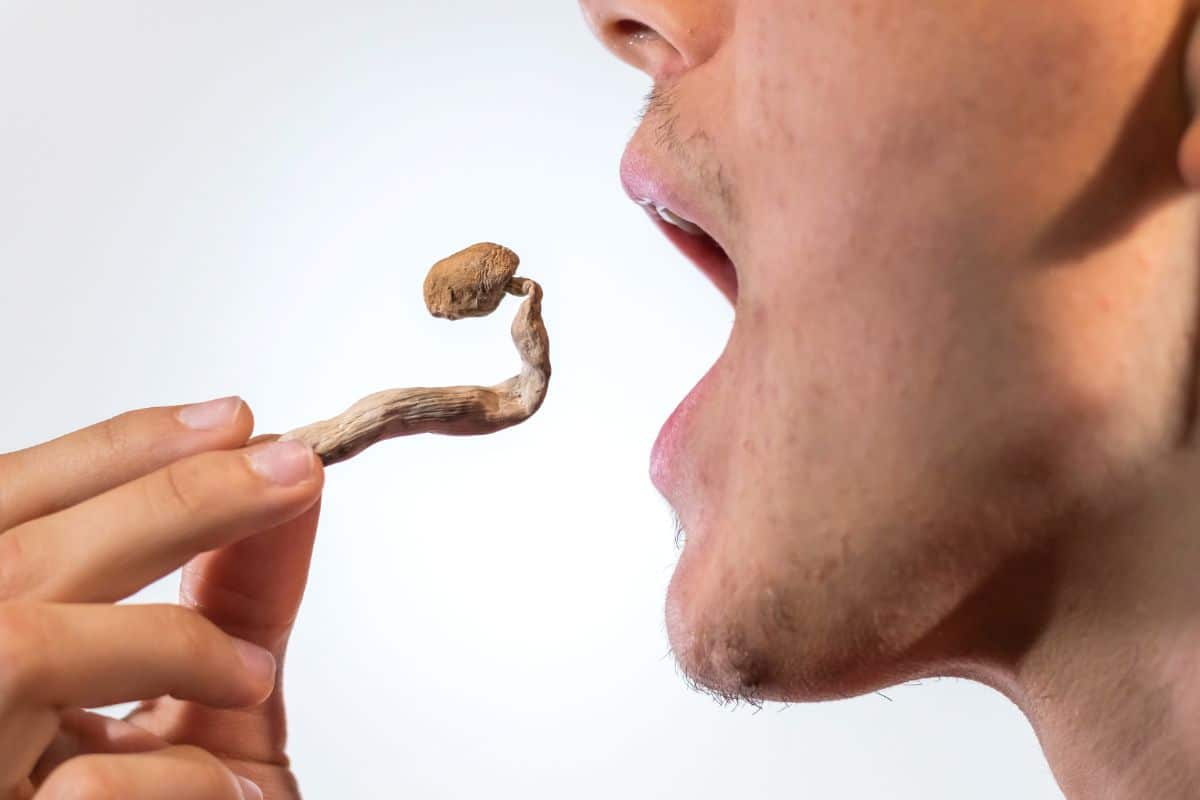
Redosing Shrooms
When considering whether to redose shrooms it’s crucial to understand the timing involved and the biological mechanisms your body activates, which can impact the effectiveness and safety of redosing. It’s also vital to be aware of the potential risks, including the heightened chance of a bad trip.
Timing and Tolerance Build-Up
Tolerance to the active compounds in shrooms, primarily psilocybin, develops swiftly after ingestion. Should you decide to redose, you might not experience the same effects with the same dosage as your body’s immediate tolerance reduces the compound’s impact.
- Initial Dose: Immediate effects
- Subsequent Dose: Diminished effects
This tolerance can begin within a few hours after your first dose, making it less likely that redosing will intensify or elongate your trip.
Potential Risks and Bad Trip Prevention
Redosing shrooms carries risks, such as unpredictable intensification of effects, potential mental and emotional discomfort, and the increased likelihood of a bad trip.
- Be cautious: Redosing can lead to stronger and unexpected psychedelic effects.
- Stay safe: Surround yourself with a calm environment and trusted individuals.
Preventing a bad trip involves setting and stability. If you choose to redose, it’s advisable to do so only in a supportive, familiar setting to mitigate any adverse experiences.
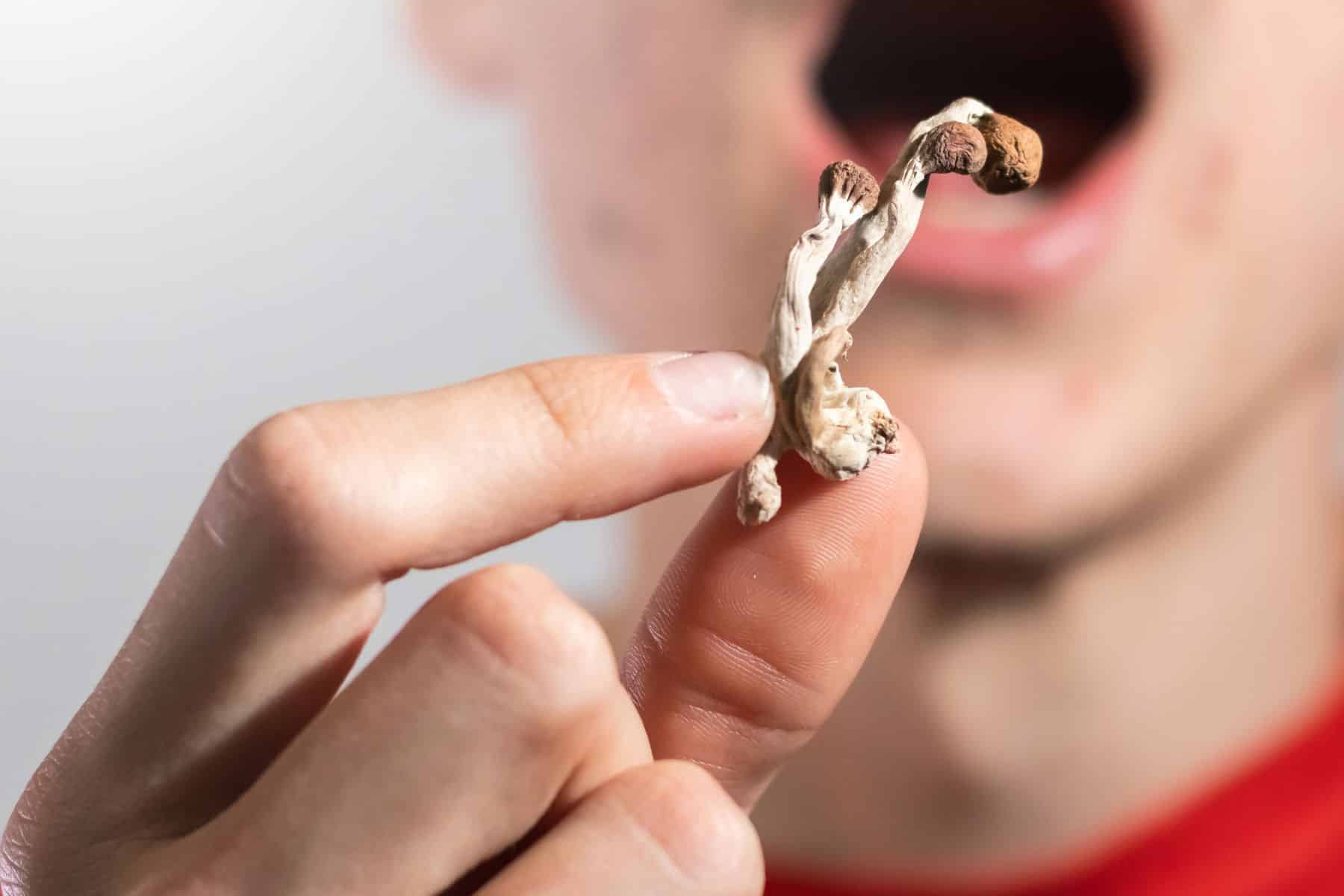
Comparative Analysis with Other Psychedelics
In considering whether you can redose shrooms, it’s crucial to explore how they compare to other psychedelics like LSD, particularly regarding their effects and potential mental health treatments.
Shrooms vs LSD
Psychedelic Effects: Both magic mushrooms (psilocybin) and LSD induce alterations in perception, mood, and thought. However, while the effects of LSD can last up to 12 hours, psilocybin typically has a shorter duration of around 4 to 6 hours. This difference in duration often influences decisions about redosing, as you may be more inclined to take an additional dose of psilocybin due to its shorter action.
Redosing: If you’re considering redosing shrooms, it’s important to remember that tolerance to the effects of psychedelics develops quickly. After the initial dose of either LSD or psilocybin, taking more shortly after can lead to diminished effects, making it ineffectual and potentially increasing adverse effects.
Shrooms and Mental Health Treatment
Treatment for Anxiety: Emerging research suggests that psilocybin may provide benefits in the treatment of anxiety and other mental health conditions. Its ability to alter consciousness may help you reassess personal issues from a new perspective. Unlike LSD, which has a longer duration and a more intense experience, shrooms can provide a shorter, often described as a more ‘grounded’ experience, potentially making them more manageable in a therapeutic setting.
Anxiety Management: While both psychedelics have shown promise in managing symptoms of anxiety, psilocybin is often chosen for clinical trials due to its manageable duration and intensity. This can make it conducive to controlled therapeutic sessions aimed at addressing mental health challenges. Clinical settings that administer psychedelics also avoid redosing, favoring a single, controlled dose that is monitored by professionals.
In your consideration of whether to redose shrooms, be aware of the specific characteristics of psilocybin compared to other psychedelics like LSD, especially regarding the overall psychedelic experience and its applications in mental health treatment.
Physical and Psychological Implications
When considering redosing with magic mushrooms, it’s crucial to understand how psilocybin—the active compound—interacts with your body and mind. The timing of redosing can significantly affect both physical effects and psychological experiences.
Body’s Metabolism and Absorption
Your body’s metabolism plays a key role in determining how quickly you feel the effects of magic mushrooms and how long they last. Typically, psilocybin is absorbed within 30 to 60 minutes after ingestion, with peak effects occurring around 90 minutes to 2 hours. Once absorbed, it’s converted into psilocin, which is the substance responsible for the psychedelic effects. Be aware that certain factors such as stomach content and individual metabolic rate can influence absorption and potency. Redosing before the initial dose takes full effect may lead to unpredictable outcomes or intensified physical effects, such as:
- Nausea or gastrointestinal discomfort
- Increased heart rate
- Changes in blood pressure
Role of Serotonin Receptors
Psilocybin and psilocin primarily exert their effects by binding to your brain’s serotonin receptors, specifically the 5-HT2A receptor. This binding mimics the effect of serotonin and can lead to altered perception, mood, and cognition. However, it’s important to consider that redosing can lead to a phenomenon known as tolerance, meaning that subsequent doses may have a reduced effect.
Psychologically, redosing may heighten the chance of experiencing anxiety or confusion, particularly if you’re unsure how your body will react to additional intake. It’s vital to approach redosing cautiously, as the psychological impact can be profound and includes:
- Sensory enhancement or hallucinations
- Synesthesia (blending of senses)
- Emotional shifts or mood changes
Engaging with magic mushrooms should always be done with respect for their potency and potential impact on your physical and mental state. It’s recommended to allow sufficient time for the initial dose to manifest fully before considering whether redosing is appropriate for you.
Post-Trip Practices
After a psychedelic journey with mushrooms, it’s crucial for you to return to a sober state, known as baseline, and to integrate the insights you’ve gained. This process ensures your safety and enriches your overall experience.
Returning to Baseline
When the effects of mushrooms begin to wane, you enter a phase called the comedown, which leads back to your baseline state. During this period, it’s important to focus on rest and hydration to aid your body’s natural recovery process. The goal is to reach a point where you feel peace and normalcy again.
- Rest: Ensure you get plenty of sleep.
- Hydration: Drink water to assist in flushing any remaining toxins.
Integrating the Experience
Post-trip, you might find yourself processing a range of emotions from fear to elation. It’s essential to integrate these feelings and any epiphanies into your daily life for personal growth and understanding.
- Reflection: Consider journaling about your experiences.
- Discussion: Talk with a trusted individual about your thoughts.
By managing your comedown effectively and reflecting on your psychedelic experience, you create a meaningful post-trip practice that promotes safety and personal insight.
Strategic Considerations for Redosing
When you consider redosing shrooms, it’s essential to understand the potential outcomes and timings to optimize your experience. The following subsections focus on aiming for a more intense trip and comprehending the plateau phase to inform your redosing strategy.
Aiming for a More Intense Trip
To boost the intensity of your psychedelic experience, redosing might seem like an attractive option. However, you must be cautious; the effects of psilocybin mushrooms can be unpredictable. If you decide to redose, consider doing so before you reach the peak of your initial dose to potentially enhance the trip’s intensity. It is crucial to wait at least 30 minutes to 1 hour after your first dose to gauge your body’s reaction before taking more.
Understanding the Plateau Phase
The plateau phase is the period where the effects of shrooms stabilize and reach a peak before gradually diminishing. If you’re contemplating redosing during this phase, remember that it might not significantly boost your current state due to the body’s tolerance building rapidly. Instead of intensifying your trip, redosing during the plateau might only prolong the duration. Carefully timing your redose during the onset or just before the plateau may provide a more controllable enhancement to your trip.
Cautions and Contraindications
Before considering redosing with psilocybin mushrooms (commonly referred to as “shrooms”), it’s crucial to understand the possible risks and contraindications. Ensuring a safe experience means being aware of overdose symptoms and making informed decisions about usage.
Identifying Overdose Symptoms
Overdose is rare with psilocybin mushrooms but not impossible. Symptoms of an overdose may include:
- Extreme confusion
- Panic and paranoia
- Nausea and vomiting
- Muscle weakness
- Seizures If you suspect an overdose, seek medical assistance immediately.
Making Informed Decisions
Your decisions on redosing should be informed by:
- Potency of the mushrooms: Higher potency can increase the intensity of the experience and the risks.
- Personal tolerance: Variations in individual tolerance can lead to unpredictable effects and the potential to overdose.
- Waste: Redosing can sometimes lead to inefficiency and waste as the body builds tolerance quickly with shrooms, diminishing effects.
- Risks: Weigh the psychological risks, which can be exacerbated by redosing, especially for individuals with predispositions to psychiatric disorders.
Always consider these factors carefully to minimize harm and maximize the potential positive aspects of your experience.
Frequently Asked Questions
When considering redosing psilocybin mushrooms, it’s crucial to understand the timing, tolerance development, potential risks, and best practices to ensure a safe experience.
What is the recommended time interval between psilocybin mushroom doses?
It’s generally advised to wait at least one to two weeks between doses to reduce tolerance buildup and minimize potential psychological and physiological risks.
How does tolerance to psilocybin develop and affect redosing?
Tolerance to psilocybin mushrooms typically develops quickly, diminishing the effects of subsequent doses if taken too soon after the initial dose. Frequent use can lead to an increased tolerance, necessitating longer breaks between sessions.
Are there any risks associated with taking multiple doses of psilocybin mushrooms in a short period?
Yes, redosing psilocybin mushrooms without sufficient intervals can increase the risk of psychological distress, uncomfortable physiological effects, and potential harm reduction practices may be overlooked.
What are the best practices for safely redosing psilocybin mushrooms?
To redose safely, start with a small initial dose, gauge your response, and if you decide to take an additional dose, do so only if you feel comfortable and grounded from your initial experience. Always approach with a risk mitigation perspective.
Can the effects of psilocybin mushrooms be intensified or prolonged by redosing?
While redosing may seem a way to intensify or prolong the experience, it often results in diminishing returns due to increasing tolerance, and can also lead to unpredictability in the intensity and duration of the effects.
How does one’s individual physiology impact the frequency and dosage of redosing with psilocybin mushrooms?
Individual physiology, including body weight, metabolism, and psychological state, plays a significant role in how one responds to psilocybin mushrooms. This variability makes it essential to personalize dosing and frequency when considering redosing.

